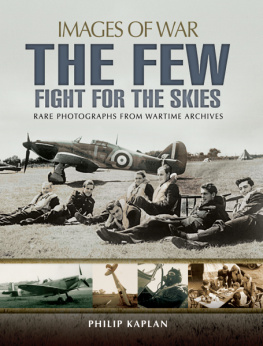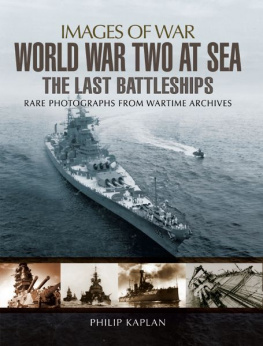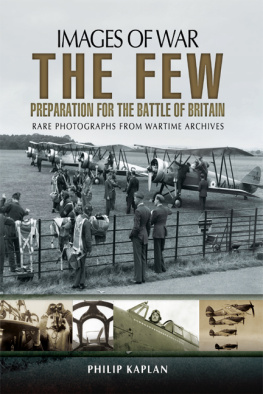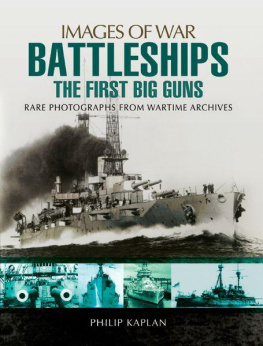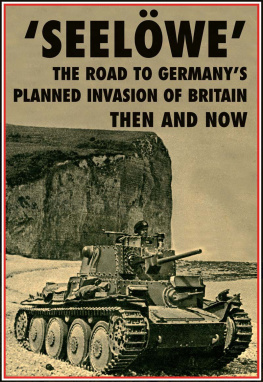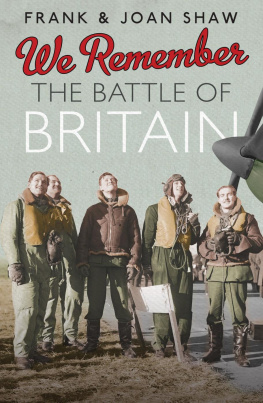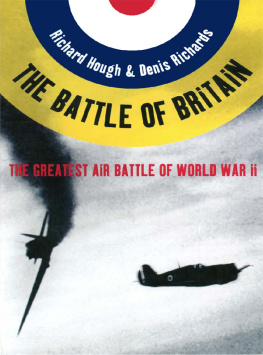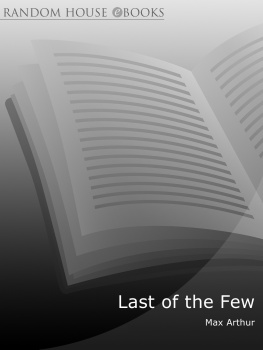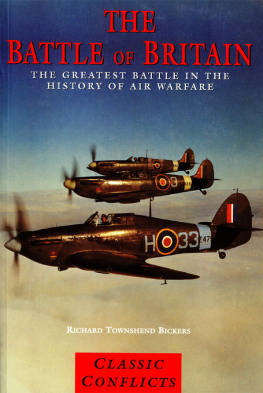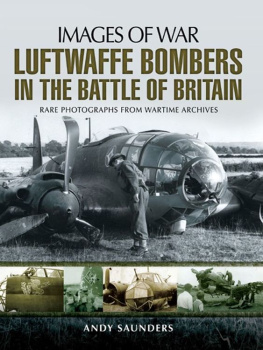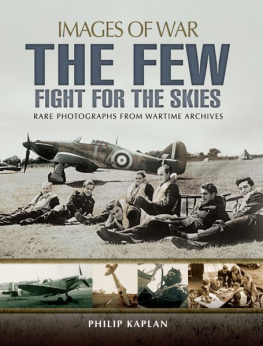
First published in Great Britain in 2013 by
PEN & SWORD AVIATION
an imprint of
Pen & Sword Books Ltd,
47 Church Street,
Barnsley, South Yorkshire.
S70 2AS
Copyright Philip Kaplan, 2013
A CIP record for this book is available from
the British Library.
PAPERBACK ISBN: 978 1 78159 368 4
PDF ISBN: 978 1 47383 081 3
EPUB ISBN: 978 1 47382 965 7
PRC ISBN: 978 1 47383 023 3
The right of Philip Kaplan to be identified as Author
of this Work has been asserted by him in accordance
with the Copyright, Designs and Patents Act 1988.
All rights reserved. No part of this book may be
reproduced or transmitted in any form or by any means,
electronic or mechanical including photocopying,
recording or by any information storage and retrieval
system, without permission from the Publisher in writing.
Printed and bound in England
By CPI Group (UK) Ltd, Croydon, CR0 4YY
Pen & Sword Books Ltd incorporates the imprints of
Pen & Sword Archaeology, Atlas,Aviation, Battleground,
Discovery, Family History, History, Maritime, Military,
Naval, Politics, Railways, Select, Social History,Transport,
True Crime, and Claymore Press, Frontline Books,
Leo Cooper, Praetorian Press, Remember When,
Seaforth Publishing and Wharncliffe.
For a complete list of Pen & Sword titles please contact
Pen & Sword Books Limited
47 Church Street, Barnsley,
South Yorkshire, S70 2AS, England
E-mail:
Website: www.pen-and-sword.co.uk
Contents
The author is grateful to the following for the use of their published and/or unpublished material, or for their kind assistance in the preparation of this book: Malcolm Bates, Tony Bianchi, K. Budzik, John Burgess, Winston Churchill, Jack Currie, Al Deere, Bob Doe, Hugh C.T. Dowding, Neville Duke, Adolf Galland, Stephen Grey, Roger Hall, Alex Henshaw, Eric Holloway, Hargi and Neal Kaplan, Brian Kingcome, Edith Kup, Eric Marsden, Edward R. Murrow, Geoffrey Page, Keith Park, Horst Petzschler, Andy Saunders, William L. Shirer, and Peter Townsend. Photographs from the Bundesarchiv, the Imperial War Museum, and the collection of the author. Reasonable efforts have been made to trace copyright holders to use their material. The author apologizes for any omissions. All reasonable efforts will be made to correct such omissions in future editions of this book.

The navigator and pilot of a Heinkel He 111 bomber attacking a target in England during the Battle of Britain.
In The Beginning
A lot of people over the years have tried to invade Britain, including the Romans in 55 BC. Later came the Vikings and the Danes. The Normans managed it successfully in 1066, but the attempt in 1588 by the King of Spain and his famous Spanish armada ended badly for him when his warships were defeated by Sir Francis Drake. Napoleon had a notion along those lines but was never able to assemble the necessary forces for such an undertaking.
Much of the modern history of Britain before 1940 revolved around her Royal Navy and how, for more than a thousand years, that navy had roamed the seas protecting the island nation. Her heroic admirals, Drake, Nelson and others had mostly triumphed over those who came by sea, engaging and shoving them back to their homelands, firmly defeated and pondering their failed efforts.

above and below: British, French and Belgian soldiers rarely saw the Spitfire Mk 1s and the Bf 109s of the Geman Luftwaffe high in the grey skies over Dunkirk in late May of 1940. It was the first encounter of the German pilots with the Mk 1 and they were shocked to find they were being both out-turned and out-climbed by their British opponents. Here, the main fire burning in the port, and wrecked cars and boats on the Dunkirk beach.

Then, in the summer of 1940, the German nation, fresh from her relatively easy conquest of Poland, Czechoslovakia, Austria, Belgium, Norway, the Netherlands, and France, confidently sent the Luftwaffe, her large and powerful air force, to clear the air over England and the English Channel in preparation for her own invasion attempt.
After the end of the First World War; the victorious Allies had punished their former enemy with a treaty executed at Versailles, a treaty put together over six months and signed on 28 June 1919 following the negotiations of that Paris Peace Conference. Among the most significant and controversial measures of the treaty were those compelling the Germans to accept responsibility for causing that war, to completely disarm, to make substantial territorial concessions, and to pay very heavy war reparations to the Allied countries that had opposed them in the war, a sum equivalent in 2013 to 284 billion. Noted economists of the time, including John Maynard Keynes, saw that last requirement as excessively harsh and unproductive. Those in leadership roles in Britain and the United States were inclined to be convinced by Keynes argument; the French, however, were not. A major intent of the treaty conference was the permanent pacification of Germany, along with the punishment dished out by the reparations element. These were key factors leading to the Second World War only twenty years later:
The negotiations leading to the Versailles Treaty had been organized to exclude the defeated Germany, Austria and Hungary, as well as Russia, which had negotiated a separate peace with Germany at the end of the war in 1918. Even the negotiators, the United Kingdom, the United States, France, Italy, and Japan, admitted that the resulting treaty was harsh and punitive. The large delegations from each of these victor nations became so unwieldy that both Japan and Italy elected to exit the meetings, leaving only the representatives of Britains David Lloyd George, Frances Georges Clemenceau, and the U.S. President, Woodrow Wilson, to slowly hammer out what has come to be known as the unhappy compromise.
At Versailles, the French expressed their position when Clemenceau said to Wilson, America is far away, protected by the ocean. Not even Napoleon himself could touch England. You [the United States and Britain] are both sheltered. We are not. He referred to the fact that only France among them possessed a land border with Germany, and stated that the French wanted to take their border to the Rhine or failing that, to create a buffer state in the Rhineland. The most the others would agree to was the de-militarization of the Rhineland, a mandate over the Saar, and the promises of Britain and the U.S. to support France in the event of a new aggression by Germany. As Keynes described the French position: it was the policy of France to set the clock back and undo what, since 1870, the progress of Germany had accomplished. By loss of territory and other measures her population was to be curtailed; but chiefly the economic system, upon which she depended for her new strength, the vast fabric built upon iron, coal, and transport must be destroyed. If France could seize, even in part, what Germany was compelled to drop, the inequality of strength between the two rivals for European hegemony might be remedied for generations.
Of the Big Three allies, France had suffered the greatest loss of life in the war as well as immense damage and Clemenceau was utterly determined to achieve the payment of massive reparations by the Germans. To some extent he had the support in that demand of the British Prime Minister Lloyd George, but the Briton also favoured the restoration of Germany to make her a strong trading partner and thus he worried about the effect of the payment of those reparations on the British economy. Like the French, he was also concerned about the preservation of his empire. In the end he worked to increase the size of the reparations Germany had to pay, by couching that negotiation in terms of compensation for the great number of Allied war widows and orphans and the many men whose war injuries now prevented them from being able to work and earn a living.




